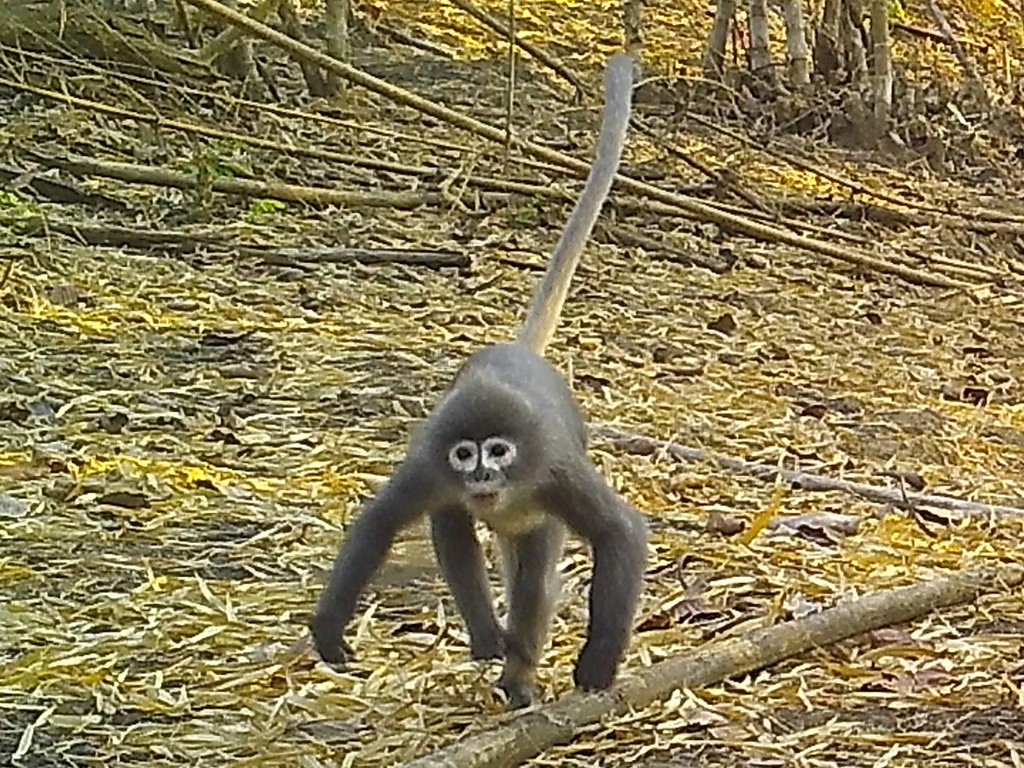
A monkey with eerie white circles around its eyes and a bright orange snake that feeds on slugs are among 224 new species identified by the World Wildlife Fund (WWF) in its latest review of the Greater Mekong region of Asia.
The primate has been named the Popa langur because it makes its home on the slopes of the extinct Mount Popa volcano in Myanmar and is the only mammal included on the revised list, which otherwise contains dozens of newly identified reptiles, frogs, newts and fish plus 155 varieties of plant species.
The area under survey by the conservation group stretches across Vietnam, Cambodia, Laos, Thailand and Myanmar and is also home to tigers, Asian elephants, saola (an extremely rare animal also called the Asian unicorn or spindlehorn) and thousands of other species, more than 3,000 of which have been discovered since 1997, according to the WWF.
The biodiversity of the Greater Mekong is extremely rich and its delicately-balanced habitats are in dire need of protection, the group stressed in the report, which was released on Wednesday.
Scientists used measurements and samples from museum collections to compare and identify key differences between features associated with the newly discovered animals and plants, they explained.
Studying such differences can help to determine the range of species living in the wilderness as well as direct threats to their survival, Thomas Ziegler, a curator at the University of Cologne’s Institute of Zoology, wrote in his introduction to the report.
Identifying new species is tricky, however, and sometimes they can only be determined by combining a variety of methods, such as the cross-referencing of frog calls with genetic data to distinguish the Cardamom leaf little frog, which was found high up in the Cardamom mountains, a wildlife refuge crossing south western Cambodia and eastern Thailand.
The ghostly Popa langur was identified based on the genetic matching of recently gathered bones with specimens that have been stored by London’s Natural History Museum for over 100 years.
The WWF, working with Fauna and Flora International, caught images of the monkeys using camera traps set up in mountain forests as part of the study.
The creature is now a candidate for listing as a critically-endangered species on the Red List of the International Union for the Conservation of Nature (ICUN), according to the report, since only between 200 and 250 are thought to survive in the wild and across only a handful of locations
Underscoring the urgency of securing their future is the fact that more than 38,000 of the 138,000 species the IUCN currently tracks are threatened with extinction.

Despite human encroachments into tropical rainforests and other wilderness zones, much of the Greater Mekong is still little explored and each year dozens of new animals, birds and plants are found, a fresh glimmer of hope given that so many go extinct.
A new type of begonia with red flowers and a berry-like fruit was also found by the WWF in the uplands of Myanmar, where illegal mining and deforestation have become an increasingly dire threat and which remains mired in political turmoil following a military takeover a year ago.
Not all of the new species detailed in the report were found deep in dense jungle, however.
One new variant of ginger plant uncovered – known as a “stink bug” for its pungent odour, similar to that emitted by large beetles – was actually spotted in a plant nursery in north eastern Thailand after being picked in the wild and sold for use as an ingredient in traditional cookery.
Additional reporting by agencies







